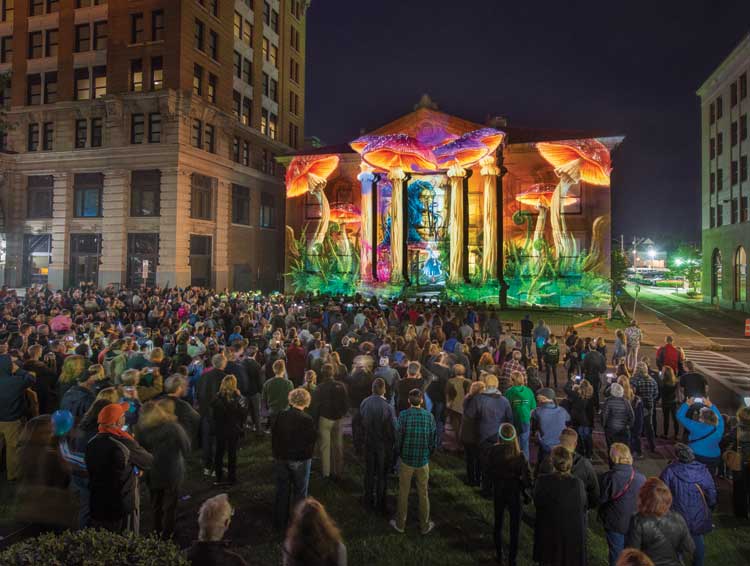When BING buildings begin to light up, move around and tell the stories created by modern artists and tech-savvy pioneers, know that it’s not a hallucination nor a hoax. It’s Binghamton’s LUMA Fest.
“It’s like a magic trick. Intellectually there’s some sort of trick, but it’s still new enough to you that you can’t fully understand it on all levels,” said LUMA Operations Director Joshua Bernard Ludzki of one of the largest projection arts festivals in the country.
Tens of thousands of spectators from all over the world gather on the crowded streets of Binghamton after dark to take in this new digital art phenomenon, unsure of what to expect. A larger-than life, projected clock counts down, the exhibit begins and the magic happens before their eyes in a spectacular way.

LUMA Fest artists from Barcelona to Budapest handpick their architectural canvases. Using projection mapping, live animations are created exclusively to suit the characteristics of these iconic buildings every September.
Inspired by the more advanced projection artists and festivals in Europe, Ludzki and co-founders Nick Rubenstein and Tice Lerner decided to reinvent the wheel by “building something that was uniquely Binghamton” – a festival for artists, by artists, that pioneered storytelling through projection mapping.
Despite the high technology, LUMA had humble beginnings. It’s a classic example the innovative legacy that still thrives in Greater Binghamton.
“We were developing the concept as we went. It was homegrown, grassroots. We didn’t have a big budget. The computers were donated and we discovered together how to pull it off,” said Ludzki. In a few short years, what started on their apartment floors as a labyrinth of cardboard boxes and make-shift projectors has grown exponentially. It drew crowds of over 35,000 in the third year.
“We wanted to create something bold to draw a big crowd and show everyone what the BING art scene had to offer,” Ludzki said.
And he certainly did.